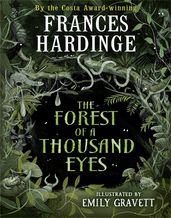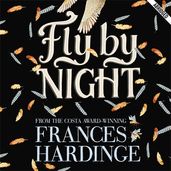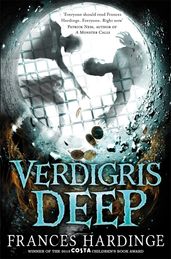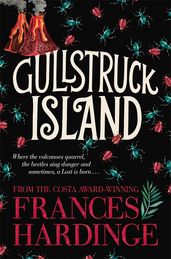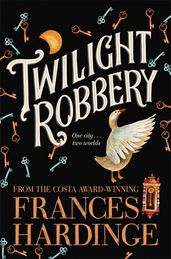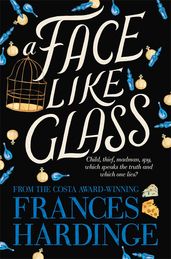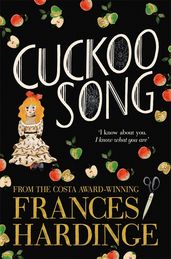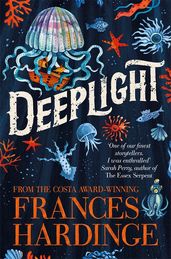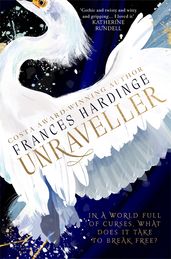Frances Hardinge's books: a complete guide
Discover the dark worlds of Frances Hardinge’s books.
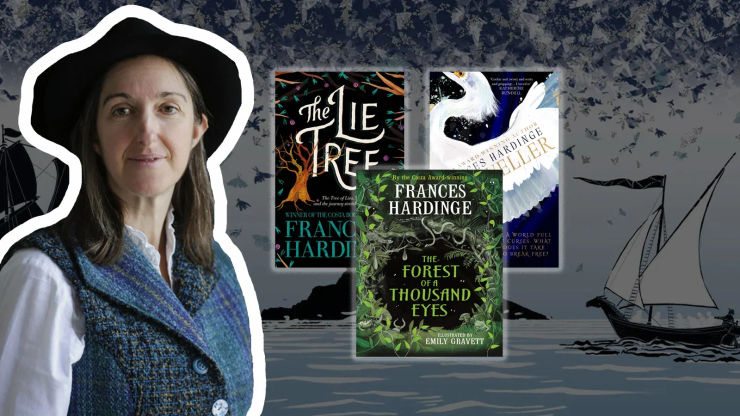
Frances Hardinge is a masterful storyteller whose enchanting and darkly imaginative tales have captivated young adult readers since her debut, Fly By Night, was published nearly twenty years ago. Her writing is renowned for blending historical settings with elements of fantasy, mystery, and the macabre, creating worlds that are both vividly real and eerily magical.
Whether you're new to her work or a long-time fan, this complete guide to Frances Hardinge’s books – including her latest work, The Forest of a Thousand Eyes – will help you discover the magic that has earned her a place as one of the most distinctive voices in young adult literature.
What is Frances Hardinge's new book?
The Forest of a Thousand Eyes
by Frances Hardinge
Feather's world, known by those who live on it as 'the Wall', is crumbling, slowly losing way to a relentless Forest. Accompanied by her loyal ferret, Sleek, she faces the Forest's threats and encounters others living on the Wall whose stories and experiences open her mind to new horizons. A compelling story filled with adventure, emotional intensity and the rawness of nature, accompanied by illustrations by superstar illustrator Emily Gravett, this richly atmospheric book is out on 19 September 2024 and available to pre-order now.
Frances Hardinge's books in order
Fly By Night
by Frances Hardinge, narrated by Lesley Sharp
Fly By Night is a thrilling adventure set in a reimagined eighteeth-century England. Frances Hardinge’s debut novel follows twelve-year-old orphan Mosca Mye and her loyal, cantankerous goose as they navigate a city rife with highwaymen, spies, and smugglers. She is on the run, heading for the city of Mandelion. There she finds herself living by her wits among cut-throat highwaymen, spies and smugglers. With peril at every turn, Mosca uncovers a dark plot to terrorize the people of Mandelion, and soon merry mayhem leads to murder. This audiobook version is read by actor, Lesley Sharp.
Verdigris Deep
by Frances Hardinge
Verdigris n. a blue-green rust that tarnishes ageing and forgotten copper coins, altering them entirely . . .
When three friends steal coins from a wishing well, they find themselves bound to the eerie powers of an ancient spirit who demands they fulfill the wishes attached to each coin. As they struggle with the strange tasks and the consequences of meddling with fate, they uncover a world where wishes come at a steep price. Verdigris Deep is a darkly witty, utterly creepy and clever novel.
Gullstruck Island
by Frances Hardinge
Chosen as one of Time Magazine's 100 Best Young Adult Books of All Time, Gullstruck Island is a vibrant and exciting novel, in a beautifully imagined setting. The story follows Hathin, a young girl from a mysterious tribe, as she navigates a world on the brink of chaos. When her sister Arilou, believed to be one of the island’s revered Lost, is accused of a devastating crime, Hathin must uncover the truth to save her people.
Twilight Robbery
by Frances Hardinge
Twilight Robbery is the extraordinary sequel to Frances Hardinge's award-winning debut, Fly By Night. Mosca Mye and her goose, Saracen, are once again caught in a whirlwind of danger when they arrive in the town of Toll. By day, the city is well-mannered and orderly; by night, it's the haunt of rogues and villains. As past deeds catch up with Mosca and Saracen and old enemies appear, it looks as if this time there's no way out. With treachery afoot and a sinister plot threatening the town, Mosca must rely on her wit and courage to outsmart her enemies.
A Face Like Glass
by Frances Hardinge
In A Face Like Glass we are introduced to the world of Caverna, where the ability to craft facial expressions is a closely guarded secret. The story follows Neverfell, a mysterious girl whose face displays emotions naturally – an anomaly in a place where everyone else must learn to show expressions. As she uncovers the dark truths hidden within Caverna’s winding tunnels, Neverfell becomes a catalyst for change in a society built on deception.
Cuckoo Song
by Frances Hardinge
Cuckoo Song is a haunting and beautifully crafted tale that blurs the lines between reality and nightmare. Set in post-World War I England, the story follows Triss, a girl who awakens after an accident with fragmented memories and an insatiable hunger. In a quest to find the truth she must travel into the terrifying Underbelly of the city to meet a twisted architect who has dark designs on her family – before it's too late. Filled with eerie twists and a deeply atmospheric setting, this novel weaves a spellbinding story of identity, trust, and the unsettling power of the unknown.
The Lie Tree
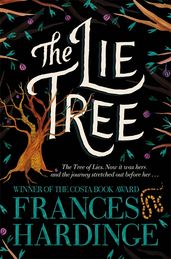
Winner of the Costa Book of the Year 2015, The Lie Tree is Frances Hardinge's best-known book. Set in Victorian England, the story follows Faith, a curious and determined young girl whose father, a renowned scientist, dies under mysterious circumstances. As Faith investigates, she discovers a strange tree that feeds on lies and reveals hidden truths in return. The deeper she delves into the tree’s power, the more dangerous her quest becomes, leading her to uncover dark secrets that could change everything . . .
A Skinful of Shadows
by Frances Hardinge
Set during the English Civil War, A Skin Full of Shadows is a haunting and evocative tale of survival and supernatural forces. In it, we meet Makepeace, a girl with the unusual ability to house the spirits of the dead within her. When she’s forced to live with her estranged father’s powerful and dangerous family, she discovers they want to use her gift for their own dark purposes. As Makepeace fights to control the spirits inside her, she uncovers buried secrets and faces terrifying challenges.
Deeplight
by Frances Hardinge
Enter a fantastical, underwater world in Deeplight where the remnants of ancient sea gods hold untold power. Set on the mysterious islands of the Myriad, the story follows Hark, a young scavenger who discovers a dangerous piece of a dead god. As he grapples with the power it brings and the attention it attracts, Hark must navigate treacherous waters – both literally and figuratively. With rich world-building, complex characters, and a plot full of twists, this is a captivating exploration of friendship, fear, and the lure of forbidden power.
Unraveller
by Frances Hardinge
In a world where anyone can create life-destroying curses, only one person has the power to unravel them. Kellen does not fully understand his talent, but uses it to help those who have been cursed, including his ally and closest friend, Nettle. But Kellen himself is cursed, and unless he and Nettle can release him, he is in danger of unravelling everything – and everyone – around him. Called her ‘best yet’ by the Guardian, Hardinge expertly weaves together mythology and mystery in a richly-detailed world besieged by curses.
Island of Whispers
by Frances Hardinge
Frances Hardinge and illustrator Emily Gravett team up for the first time to create Island of Whispers, a thrilling fairy tale filled with ghosts and magic. On the island of Merlank, seeing a ghost can kill you, and young Milo is thrust into the dangerous role of Ferryman after his father's sudden death. Pursued by a vengeful lord and malevolent magicians, Milo must navigate treacherous seas to fulfill his mission. Richly illustrated with luscious blue ink, this captivating coming-of-age tale is perfect for fans of mysterious fantasy worlds.
